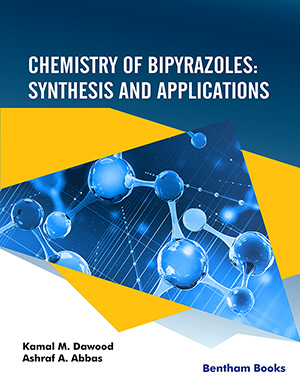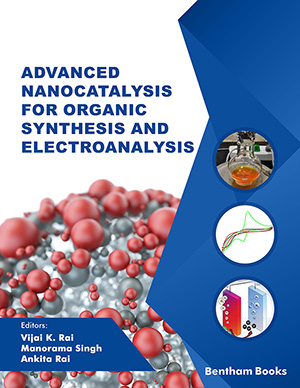
Abstract
The last decade has witnessed an increasing interest in sugar urea derivatives because of their biological properties. Consequently, new synthetic procedures that explore reactivity differences of the sugar units for the synthesis of molecules bearing urea moiety linked to sugars architecture, have been investigated. The main routes involve isocyanate species, also obtained from the oxidation of isocyanides, by direct reaction with amines or aminosugars or more recently by aza-Wittig reaction with sugar-derived phosphinimines. Other important strategies are based on the reaction of sugarderived oxazolidinones and carbamates with amines, and modified Curtius rearrangement of sugar carboxylic acids or reaction of sugar-derived phosphinimines with carbon dioxide and amines. This review provides a comprehensive survey of synthetic approach to carbohydrate-based ureas with a focus on the recent procedures.
Keywords: Carbohydrate-Based Ureas, synthesis, isocyanate species, oxidation, Wittig reaction, oxazolidinones, UREIDO SUGARS, AMINOSUGARS
Current Organic Chemistry
Title: Synthetic Approaches to Carbohydrate-Based Ureas
Volume: 12 Issue: 13
Author(s): Pietro Spanu and Fausta Ulgheri
Affiliation:
Keywords: Carbohydrate-Based Ureas, synthesis, isocyanate species, oxidation, Wittig reaction, oxazolidinones, UREIDO SUGARS, AMINOSUGARS
Abstract: The last decade has witnessed an increasing interest in sugar urea derivatives because of their biological properties. Consequently, new synthetic procedures that explore reactivity differences of the sugar units for the synthesis of molecules bearing urea moiety linked to sugars architecture, have been investigated. The main routes involve isocyanate species, also obtained from the oxidation of isocyanides, by direct reaction with amines or aminosugars or more recently by aza-Wittig reaction with sugar-derived phosphinimines. Other important strategies are based on the reaction of sugarderived oxazolidinones and carbamates with amines, and modified Curtius rearrangement of sugar carboxylic acids or reaction of sugar-derived phosphinimines with carbon dioxide and amines. This review provides a comprehensive survey of synthetic approach to carbohydrate-based ureas with a focus on the recent procedures.
Export Options
About this article
Cite this article as:
Spanu Pietro and Ulgheri Fausta, Synthetic Approaches to Carbohydrate-Based Ureas, Current Organic Chemistry 2008; 12 (13) . https://dx.doi.org/10.2174/138527208785740319
| DOI https://dx.doi.org/10.2174/138527208785740319 |
Print ISSN 1385-2728 |
| Publisher Name Bentham Science Publisher |
Online ISSN 1875-5348 |
Call for Papers in Thematic Issues
Advances of Heterocyclic Chemistry with Pesticide Activity
Global food safety and security will continue to be a global concern for the next 50 years and beyond. Plant diseases have had a significant impact on food safety and security throughout the entire food chain, from primary production to consumption. While conventional chemical pesticides have been traditionally used for ...read more
Carbohydrates conversion in biofuels and bioproducts
Biomass pretreatment, hydrolysis, and saccharification of carbohydrates, and sugars bioconversion in biofuels and bioproducts within a biorefinery framework. Carbohydrates derived from woody biomass, agricultural wastes, algae, sewage sludge, or any other lignocellulosic feedstock are included in this issue. Simulation, techno-economic analysis, and life cycle analysis of a biorefinery process are ...read more
Catalytic C-H bond activation as a tool for functionalization of heterocycles
The major topic is the functionalization of heterocycles through catalyzed C-H bond activation. The strategies based on C-H activation not only provide straightforward formation of C-C or C-X bonds but, more importantly, allow for the avoidance of pre-functionalization of one or two of the cross-coupling partners. The beneficial impact of ...read more
Cutting-edge technology for the development of electrochemical sensors
Electrochemistry based point of care diagnostics is a powerful tool which can revolutionize the current concept of personalize health care industry. There have been several efforts to amalgamate cutting edge technologies (nanotechnology, surface technology, anti-biofouling strategies) while developing assays. The success of each electrochemical sensor is very dependable upon how ...read more
Related Journals
 13
13
- Author Guidelines
- Graphical Abstracts
- Fabricating and Stating False Information
- Research Misconduct
- Post Publication Discussions and Corrections
- Publishing Ethics and Rectitude
- Increase Visibility of Your Article
- Archiving Policies
- Peer Review Workflow
- Order Your Article Before Print
- Promote Your Article
- Manuscript Transfer Facility
- Editorial Policies
- Allegations from Whistleblowers
- Announcements
























